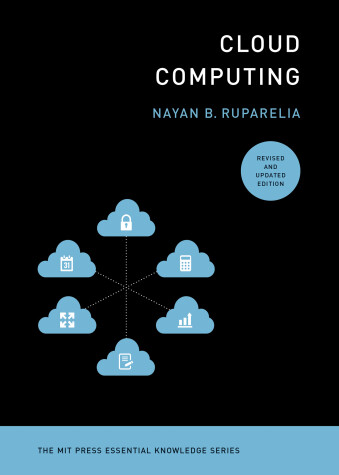MIT Press Essential Knowledge
2 total works
Most of the information available on cloud computing is either highly technical, with details that are irrelevant to non-technologists, or pure marketing hype, in which the cloud is simply a selling point. This book, however, explains the cloud from the user's viewpoint -- the business user's in particular. Nayan Ruparelia explains what the cloud is, when to use it (and when not to), how to select a cloud service, how to integrate it with other technologies, and what the best practices are for using cloud computing.
Cutting through the hype, Ruparelia cites the simple and basic definition of cloud computing from the National Institute of Science and Technology: a model enabling ubiquitous, convenient, on-demand network access to a shared pool of configurable computing resources. Thus with cloud computing, businesses can harness information technology resources usually available only to large enterprises. And this, Ruparelia demonstrates, represents a paradigm shift for business. It will ease funding for startups, alter business plans, and allow big businesses greater agility.
Ruparelia discusses the key issues for any organization considering cloud computing: service level agreements, business service delivery and consumption, finance, legal jurisdiction, security, and social responsibility. He introduces novel concepts made possible by cloud computing: cloud cells, or specialist clouds for specific uses; the personal cloud; the cloud of things; and cloud service exchanges. He examines use case patterns in terms of infrastructure and platform, software information, and business process; and he explains how to transition to a cloud service. Current and future users will find this book an indispensable guide to the cloud.
Cutting through the hype, Ruparelia cites the simple and basic definition of cloud computing from the National Institute of Science and Technology: a model enabling ubiquitous, convenient, on-demand network access to a shared pool of configurable computing resources. Thus with cloud computing, businesses can harness information technology resources usually available only to large enterprises. And this, Ruparelia demonstrates, represents a paradigm shift for business. It will ease funding for startups, alter business plans, and allow big businesses greater agility.
Ruparelia discusses the key issues for any organization considering cloud computing: service level agreements, business service delivery and consumption, finance, legal jurisdiction, security, and social responsibility. He introduces novel concepts made possible by cloud computing: cloud cells, or specialist clouds for specific uses; the personal cloud; the cloud of things; and cloud service exchanges. He examines use case patterns in terms of infrastructure and platform, software information, and business process; and he explains how to transition to a cloud service. Current and future users will find this book an indispensable guide to the cloud.
An updated, revised, and comprehensive overview of the concepts related to cloud computing, including recent applications, innovations, and its future evolution.
In this Essential Knowledge volume, Nayan B. Ruparelia provides an updated and revised version of Cloud Computing, first published in 2016, to address not only the fact that cloud computing has become a ubiquitous part of mainstream computing since then but also has made strides in other key aspects of the technology’s development, including:
An indispensable guide to cloud computing for the layperson, Cloud Computing cuts through the technical jargon and details that are irrelevant to nontechnologists, as well as the marketing hype, and explains clearly what cloud computing is, when to use it (and when not to), how to select a cloud service, how to integrate it with other technologies, and what the best practices are for its adoption.
In this Essential Knowledge volume, Nayan B. Ruparelia provides an updated and revised version of Cloud Computing, first published in 2016, to address not only the fact that cloud computing has become a ubiquitous part of mainstream computing since then but also has made strides in other key aspects of the technology’s development, including:
- cloud computing’s history,
- updated security fundamentals that provide examples of Identity and Access Management (IAM) use that illustrate the difference between on-premise (i.e., conventional) security and cloud-based security implementation and Security Information and Event Management SIEM),
- an updated discussion of data migration to the cloud,
- a new chapter on data integrity,
- cloud native computing,
- the use of microservice design patterns,
- cloud automation using orchestrators and tools such as Kubernetes,
- a comparison of common public clouds (Microsoft Azure, Google Cloud Platform, and Amazon AWS),
- and a future outlook for cloud computing.
An indispensable guide to cloud computing for the layperson, Cloud Computing cuts through the technical jargon and details that are irrelevant to nontechnologists, as well as the marketing hype, and explains clearly what cloud computing is, when to use it (and when not to), how to select a cloud service, how to integrate it with other technologies, and what the best practices are for its adoption.

